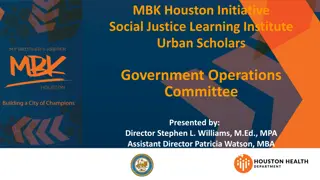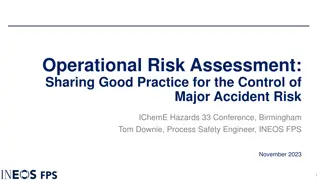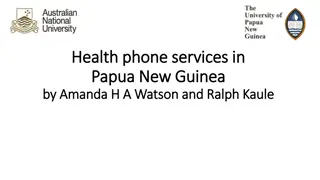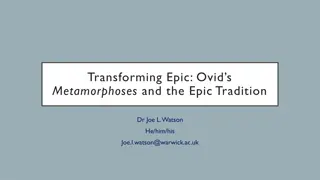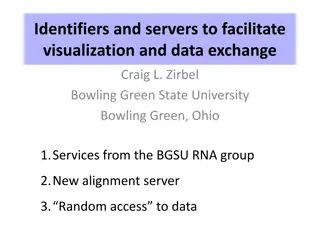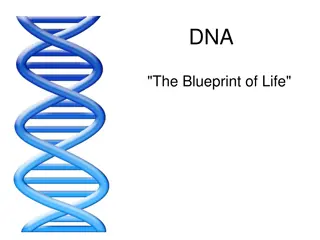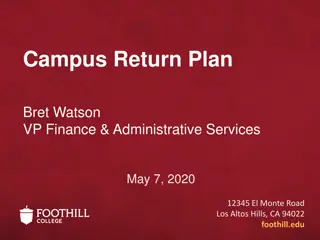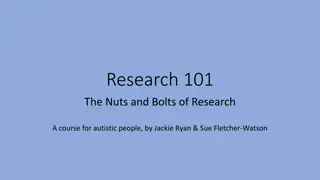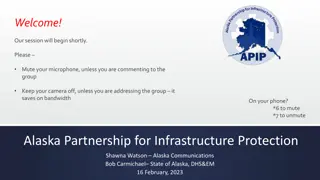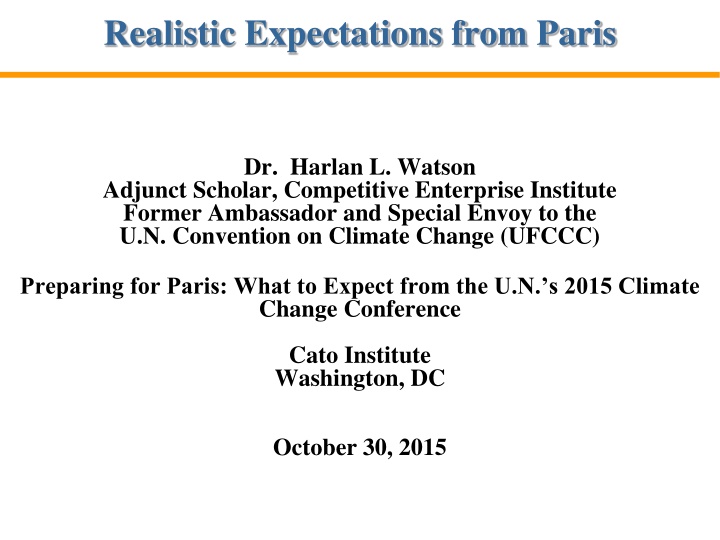
Climate Change Negotiations: a Comprehensive Overview
Delve into the intricate landscape of international climate change negotiations, exploring key agreements such as the UN Framework Convention on Climate Change and the Kyoto Protocol. Gain insights into the historical milestones, major issues at hand, and the likely outcomes expected from upcoming conferences. Discover the roles of different country groups, the financial burdens placed on Annex II Parties, and the imperative for technology transfer to aid in combating climate change.
Download Presentation

Please find below an Image/Link to download the presentation.
The content on the website is provided AS IS for your information and personal use only. It may not be sold, licensed, or shared on other websites without obtaining consent from the author. If you encounter any issues during the download, it is possible that the publisher has removed the file from their server.
You are allowed to download the files provided on this website for personal or commercial use, subject to the condition that they are used lawfully. All files are the property of their respective owners.
The content on the website is provided AS IS for your information and personal use only. It may not be sold, licensed, or shared on other websites without obtaining consent from the author.
E N D
Presentation Transcript
Realistic Expectations from Paris Dr. Harlan L. Watson Adjunct Scholar, Competitive Enterprise Institute Former Ambassador and Special Envoy to the U.N. Convention on Climate Change (UFCCC) Preparing for Paris: What to Expect from the U.N. s 2015 Climate Change Conference Cato Institute Washington, DC October 30, 2015
Outline International Climate Change Negotiations History UN Framework Convention on Climate Change (UNFCCC) Kyoto Protocol (KP) Bali, Copenhagen & Canc n Outcomes Durban, Doha, Warsaw & Lima Outcomes Ad Hoc Working Group on the Durban Platform for Enhanced Action (ADP) What has all this accomplished? Major Issues Likely Outcome(s)
UN Framework Convention on Climate Change (UNFCCC) Adopted 9 May 1992; entered into force 21 March 1994. Annex I Parties are to take the lead in combating climate change and the adverse effects thereof . . . according to the principles of equity and common but differentiated responsibilities and respective capabilities. Ultimate objective: achieve . . stabilization of greenhouse gas [GHG] concentrations in the atmosphere at a level that would prevent dangerous anthropogenic interference with the climate system . . . within a time frame sufficient to allow ecosystems to adapt naturally to climate change, to ensure that food production is not threatened and to enable economic development to proceed in a sustainable manner . The extent to which developing country Parties will effectively implement their commitments under the Convention will depend on . . . [developed country Parties ] effective implementation of their commitments . . . related to financial resources and transfer of technology . . . taking fully into account that economic and social development and poverty eradication are the first and overriding priorities of the developing country Parties. 195 countries & European Union (EU) are Parties; Conference of the Parties (COP) composed of all Parties is UNFCCC s supreme body and usually meets annually. UNFCCC places financing and technology burdens on the 24 Annex II Parties, including: Divides the world into three main groups: Providing new and additional financial resources to meet the agreed full costs incurred by developing country Parties in complying with their inventory and reporting obligations and such financial resources, including for the transfer of technology, needed by those Parties to meet the agreed full incremental costs of implementing measures to meet their obligations. Annex I Parties (43): 23 industrialized countries, EU, 14 countries with economies in transition (including Russia, Baltic States, and several Central and Eastern European countries), Cyprus, Malta, Liechtenstein, Monaco, and Turkey. Assisting developing country Parties . . . particularly vulnerable to the adverse effects of climate change in meeting costs of adaptation to those adverse effects. Annex II Parties (24): All countries who were members of the Organisation for Economic Co- operation and Development (OECD) members in 1992 (except Turkey) and the EU. Taking all practicable steps to promote, facilitate and finance, as appropriate, the transfer of, or access to, environmentally sound technologies and know-how to other Parties, particularly developing country Parties, to enable them to implement Convention provisions. Non-Annex I Parties: All others (153).
Kyoto Protocol (KP) Adopted 11 December 1997; entered into force 16 February 2005. Negotiations on KP second commitment period launched at 2005 CMP 1 in Montreal. 191 countries & EU are Parties; Conference of the Parties serving as the meeting of the Parties to the Kyoto Protocol (CMP) composed of all Parties is KP s supreme body and usually meets with the COP annually. KP did not expire after 2012; rather, no further legally-binding reductions are required after 2012. 2011 CMP 7 at Durbin, South Africa agreed to a KP second commitment period from 2013-2020. Set GHG emissions limits for 38 developed countries & EU for 2008- 2012, including all UNFCCC Annex I except U.S.; no emissions limits for developing countries. Canada withdrew in 2012. 2012 CMP 8 at Doha, Qatar agreed to a KP second commitment period, with Japan, New Zealand and Russia declining to participate. Contains three flexibility mechanisms (joint implementation, clean development mechanism, and emissions trading) allowing countries to achieve a proportion of their commitments by earning credits for GHG emissions avoided or GHG removals achieved in other countries. Acceptance of Doha Amendment by 144 Parties required before it enters into force; as of 9 October 2015, 50 Parties have accepted.
UNFCCC Annex I and Annex II Parties Annex I Belarus Bulgaria Croatia Cyprus Czech Republic Estonia Hungary Latvia Liechtenstein Lithuania Malta Monaco Poland Romania Russia Slovakia Slovenia Turkey Ukraine Annex II Australia Austria Belgium Canada Denmark European Union Finland France Germany Greece Iceland Ireland Italy Japan Luxembourg Netherlands New Zealand Norway Portugal Spain Sweden Switzerland United Kingdom United States Source: http://unfccc.int/files/essential_background/convention/background/application/pdf/convention_text_with_annexes_english_for_posting.pdf (United Nations Convention on Climate Change, pp. 19-21).
UNFCCC Organizational Structure Source: http://unfccc.int/files/inc/graphics/image/png/unfccc_bodies_large.png
Path to Paris1: Bali, Copenhagen & Cancn 2007 COP 13 in Bali, Indonesia Adopted Bali Action Plan launching a comprehensive process to enable the full, effective and sustained implementation of the Convention through long-term cooperative action, now, up to and beyond 2012, in order to reach an agreed outcome and adopt a decision at COP 15 in Copenhagen in 2009. Called for: A shared vision for long-term cooperative action, including a long-term goal for emissions reductions, to achieve the ultimate objective of the Convention, in accordance with . . . in particular the principle of common but differentiated responsibilities and respective capabilities, and Enhanced national/international action on mitigation of climate change and enhanced action on adaptation, technology development and transfer, and provision of financial resources and investment to support action on mitigation, adaptation, and technology cooperation. Negotiations to be conducted under a subsidiary body under the Convention: Ad Hoc Working Group on Long-term Cooperation under the Convention (AWG-LCA). 2009 COP 15 in Copenhagen COP took note of 12-paragraph Copenhagen Accord, a non-legally-binding political agreement negotiated by a small group of countries near end of meeting, and extended the AWG-LCA with a view to presenting the outcome of its work at COP 16 in Canc n; subsequently expressed their intention to be listed as agreeing to the Accord. 2010 COP 16 in Canc n, Mexico Brought most of the Copenhagen Accord back into the negotiations process, extended AWG-LCA. Created the Green Climate Fund and established the Adaptation Committee and the Technology Mechanism (which includes the Technology Executive Committee and Climate Technology Centre and Network).
Path to Paris2: Durban, Doha, Warsaw & Lima 2011 COP 17 & CMP 7 in Durban, South Africa COP launched the Ad Hoc Working Group on the Durban Platform for Enhanced Action (ADP) with a mandate to develop a protocol, another legal instrument or an agreed outcome with legal force under the Convention applicable to all Parties to be completed by 2015 and begin implementation after 2020, and address pre-2020 ambition. CMP agreed to a KP second commitment period. 2012 COP 18 & CMP 8 in Doha, Qatar COP agreed to terminate the AWG-LCA and negotiations under the Bali Action Plan, and to consider loss and damage, such as an institutional mechanism to address loss and damage in developing countries particularly vulnerable to the adverse effects of climate change. CMP agreed to KP amendments to establish its second commitment period. 2013 COP 19 in Warsaw, Poland COP invited Parties to initiate or intensify domestic preparations for their intended nationally determined contributions (INDCs), and established the Warsaw International Mechanism on Loss and Damage. 2014 COP 20 in Lima, Peru COP adopted Lima Call for Climate Action, including elaboration of draft negotiating text elements, the process for submitting and reviewing INDCs and addresses enhancing pre-2020 ambition; also helped operationalize the Warsaw International Mechanism for Loss and Damage.
Path to Paris3: Ad Hoc Working Group on the Durban Platform for Enhanced Action (ADP) First met in May 2012; 14 meetings to date ADP Text Negotiations Underway in 2015 8-13 February in Geneva: Negotiations began with Lima Call for Climate Action s 39-page Elements for a draft negotiating text ; agreed to a 90-page compilation text as basis for further negotiations. 1-11 June in Bonn: Produced an 85-page Revised streamlined and consolidated text, and a 68-page Working Document. Tasked ADP Co-Chairs (Dan Reifsnyder of the U.S. State Department and Ahmed Djoghlaf of Algeria) to prepare a fully streamlined, consolidated, clear and concise version of the Geneva Negotiating Text to be considered at its next meeting. 31 August-4 September in Bonn: Considered Co-Chairs 88-page effort, including a 19-page draft agreement and 32-page draft decision; Co-Chairs asked to prepare new text for next meeting. 19-23 October in Bonn to consider Co-Chair s latest effort 23 pages of text; 10 for an agreement and 3 for accompanying decisions. Further discussions resulted in 59 pages of text to be considered at Paris 31 for an agreement and 20 for accompanying decisions. UNFCCC Secretariat is also preparing a technical paper on the text to identify overlaps, redundancies, etc. 128 INDC submissions as of 29 October 2015 reflecting 155 countries (including the 28 EU Member States), and covering around 87% of 2010 (excluding Land Use, Land-Use Change and Forestry) and 88% of global population.* *Source: http://climateactiontracker.org/indcs.html.
What Has All This Accomplished? From 1990 to 2012: World GHG emissions up 40.0% Annex I GHG emission down 5.6% Annex II GHG emissions down 4.4 % Non-Annex I GHG emissions up 87.0% From 1990 to 2012: World CO2 emissions from fuel combustion up 33.9% Annex I CO2 emissions from fuel combustion down 5.7% Annex II CO2 emissions from fuel combustion up 3.6 % Non-Annex I CO2 emissions from fuel combustion up 63.1% Sources: European Commission, Joint Research Centre (JRC)/PBL Netherlands Environmental Assessment Agency GHG (CO2, CH4, N2O, F-gases) emission time series 1990-2012 per region/country at http://edgar.jrc.ec.europa.eu/overview.php?v=GHGts1990- 2012; and International Energy Agency, CO2 Emissions From Fuel Combustion Highlights 2014 at https://www.iea.org/media/freepublications/stats/CO2_Emissions_From_Fuel_Combustion_Highlights_2014.XLS,
Major Issues Developed country provision of financing and technology to developing countries for mitigation of net GHG emissions and adaptation to climate change. Transparency: Measurement, reporting, and verification (MRV) of developed and developing country commitments/ actions and provision of finance and technology. Feasibility of developed country financing commitment of $100 billion/year by 2020, (and more beyond), which many developing countries consider inadequate. What exactly is to be measured, reported and verified, and what criteria/metrics should be used? How are developed and developing country commitments/actions and developed country provision of finance, technology and capacity building to be measured, reported and verified? Loss and damage. Protection of intellectual property rights for technologies related to climate change mitigation and adaptation. Who does the measuring, monitoring, and reporting and how often should such measuring, monitoring, and reporting take place? Differentiation: Developed country and developing country commitments/actions to reduce net greenhouse gas (GHG) emissions. What are the institutional, governance, legal implications? What should be developed and/or major developing countries commitments/actions? Adaption/mitigation balance. What baseline? Role of emissions trading/market mechanisms. What period? Shared vision for long-term cooperative action. Legal Form of the agreement(s). Is holding temperature increases to 2 degrees Celsius either sufficient or feasible? Top-down (i.e., KP-like) vs. bottom-up . Hybrid approach. Is a global emissions reduction goal of 50% below 1990 (or 60% below 2010) levels by 2050 or total decarbonization by 2100 feasible? What are the implications of such goals for developed and developing countries?
Likely Outcome(s) An agreement, with no legally-binding emissions targets and timetables but with legally-binding INDC reporting provisions and reviews at 5-year intervals. Non-legally binding language on finance, but reference to jointly mobilizing $100 billion from all sources by 2020. Reference to long-term (2100) goals of limiting warming to 1.5/2 degrees centigrade above pre-industrial levels and total decarbonization. Call for elimination of fossil-fuel subsidies. Balance UNFCCC focus on mitigation and adaptation. Warsaw International Mechanism on Loss and Damage implementation referenced, but not enhanced. Note that for the Kyoto Protocol it took 8 (1997-2005) years to agree on the rules of implementation, so years of work ahead to implement whatever comes out of Paris.


